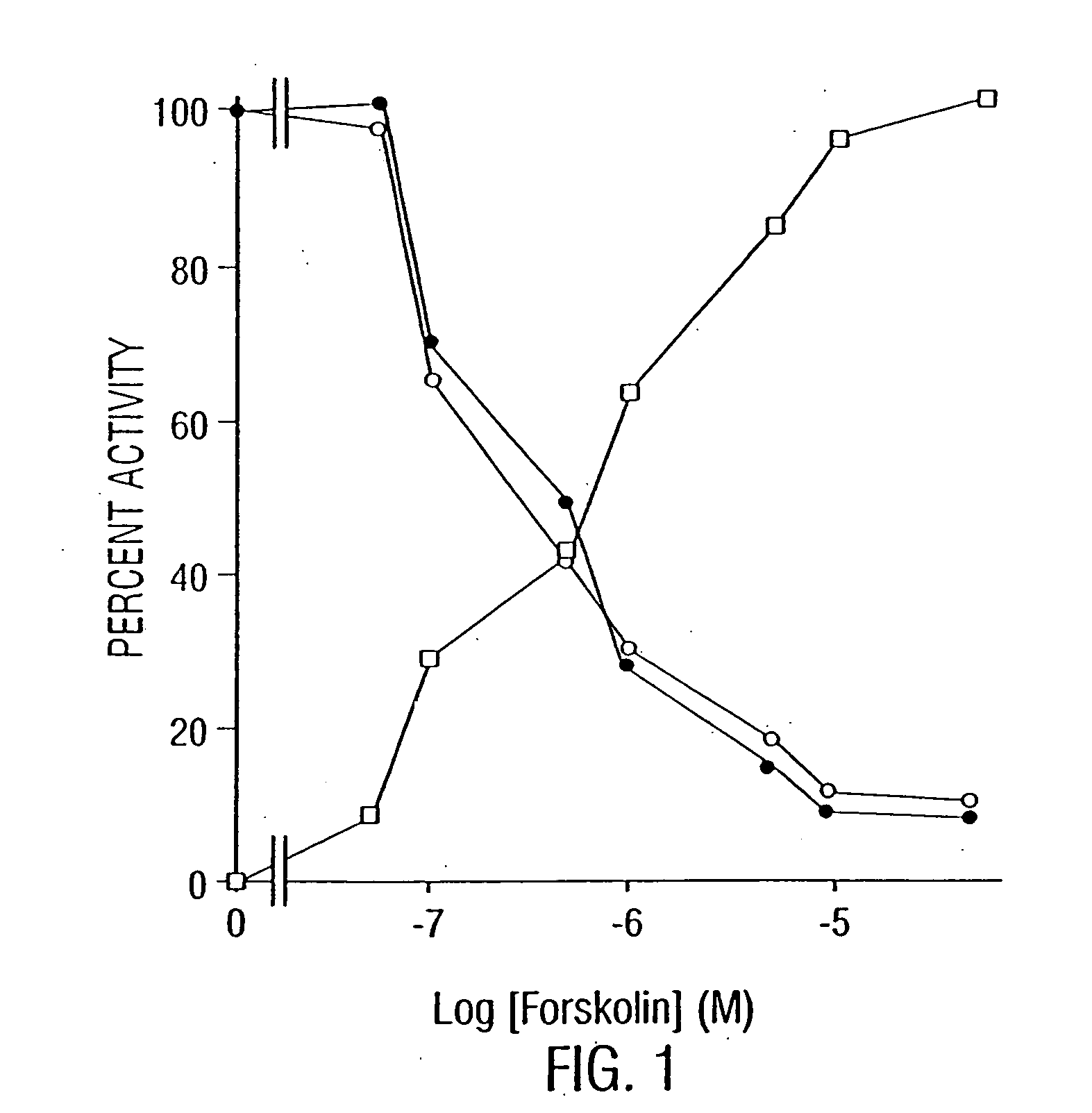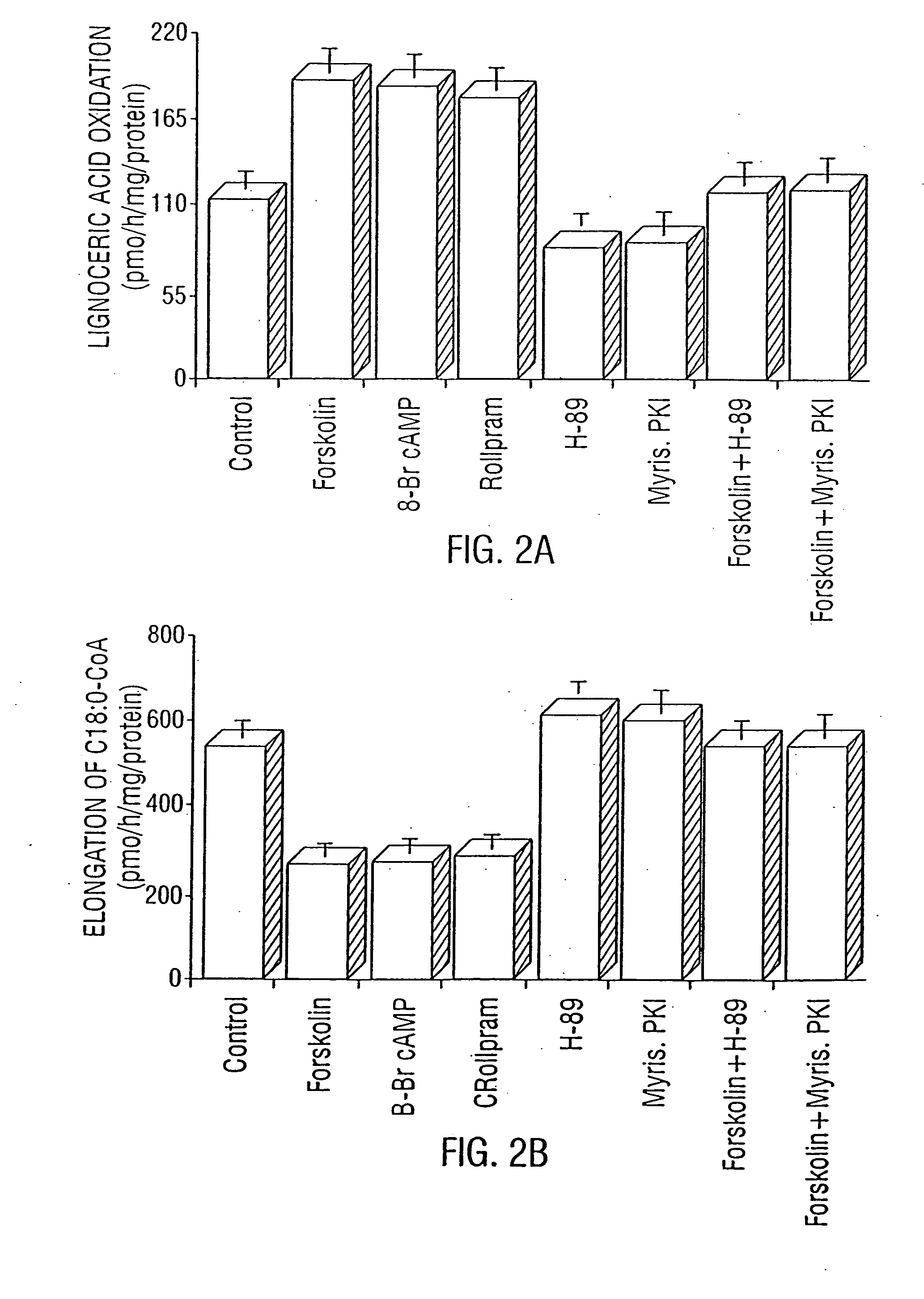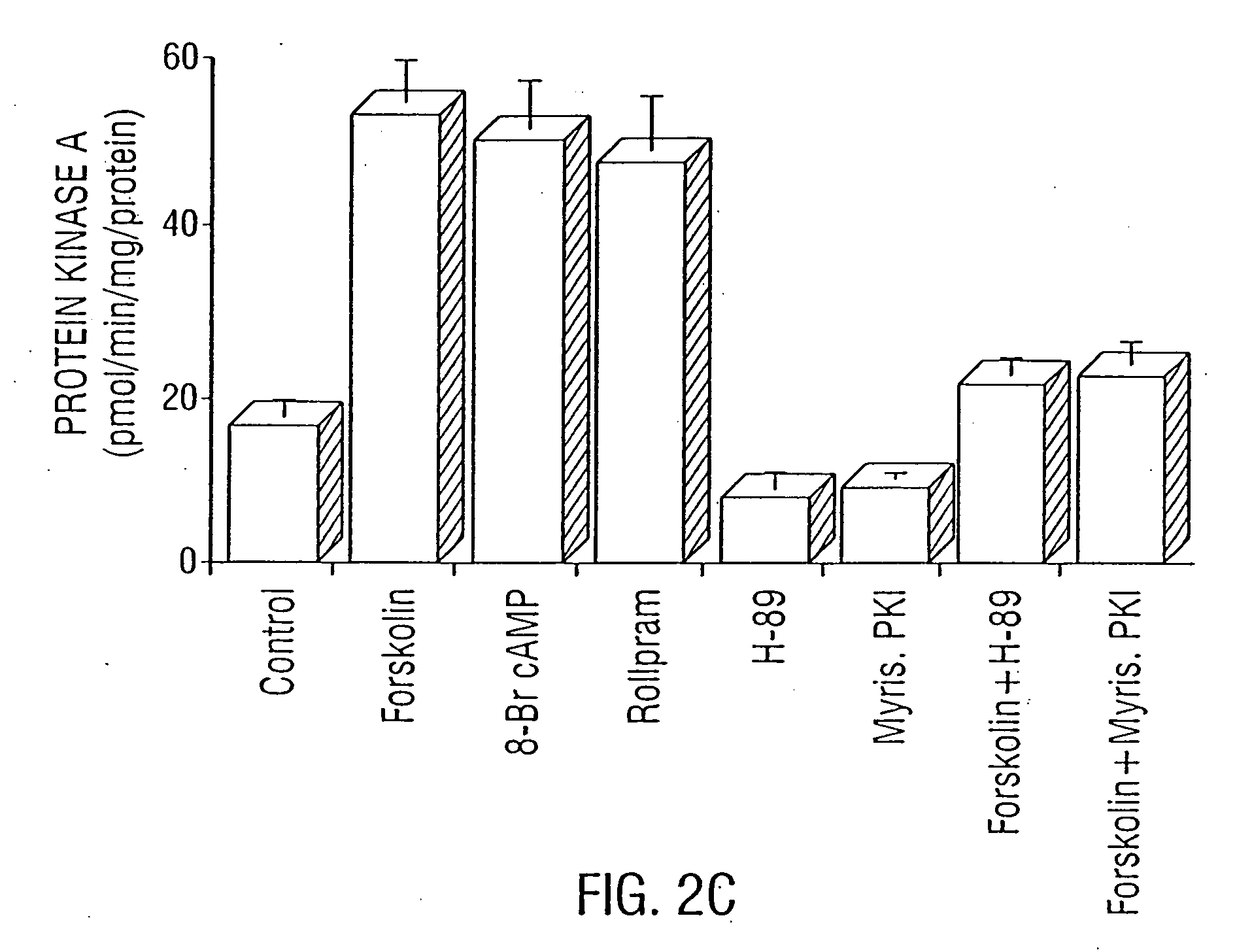Inhibitors of nitric oxide synthase
a technology of nitric oxide and inhibitors, which is applied in the direction of chemical treatment enzyme inactivation, drug compositions, cardiovascular disorders, etc., can solve the problems of neurological disability, unsatisfactory clinical efficacy, and toxic treatment with unsaturated fatty acids for x-ald patients, and achieve the effect of suppressing the induction of proinflammatory cytokines and inhibiting proinflammatory cytokines
- Summary
- Abstract
- Description
- Claims
- Application Information
AI Technical Summary
Benefits of technology
Problems solved by technology
Method used
Image
Examples
example 1
Inhibition of iNOS and Cytokines
[0209] Reagent Recombinant rat IFN-γ, DMEM / F-12 medium, RPMI 1640 medium, fetal bovine serum and Hanks' balanced salt solution (HBSS) were obtained from GIBCO. Human ILI-β was obtained from Genzyme, USA. Mouse recombinant TNF-α was obtained from Boehringer Mannheim, Germany. Lovastatin, mevastatin and farnesyl pyrophosphate were obtained from Biomol, USA and CalBiochem, USA. Cholesterol, ubiquinone, arginase, N-Acetyl cystein (NAC), pyrrolidine dithiocarbamate (PDTC), NADPH, FAD, tetrahydrobiopterin, Dowen-50W and LPS (Escherichia coli) were obtained from Sigma (St. Louis, Mo.). NG-methyl-L-arginine (L-NMA), FPT inhibitor II and antibodies against mouse macrophage iNOS were obtained from Calbiochem, USA. Immunoassay kits for TNF-α, IL-1β and IL-6 were obtained from R&D, USA. NF-kβ DNA binding protein detection kit was obtained from GIBCO / BRL, USA. [γ-32P]ATP (3000 Ci / mmol) and L-[2,3,4,5-3H] arginine were obtained from Amersham, USA. Sodium salt of p...
example 2
NAC Inhibits LPS-Induced NO Synthesis in Resident Peritoneal Macrophages
[0233] Reagents Reagents were as given in Example 1. Rat macrophages, astrocytes and C6 glial cells were prepared as described in Example 1. Assays to measure the induction of NO synthesis, NOS activity, immunoblot analyses for iNOS, RNA isolation, RT-PCR and determination of TNF-α in culture supernatants were as described in Example 1.
[0234] The effect of NAC on LPS-induced NO-synthesis was examined in resident peritoneal macrophages. Resident macrophages were cultured in RPMI medium without serum in presence of different concentrations of LPS and NAC. The concentration of NO as nitrite was measured in cultured supernatants after 24 h. As shown in Table 4, in rat resident macrophages, LPS (1 μg / ml) induced the production of nitrite, the soluble product of NO in the culture medium (Wang et al., 1995), by more than ten fold. LPS-induced production of nitrite was concentration dependent with maximal induction at...
example 3
Modulation of LPS-Induced NO Production and Expression of iNOS in Rat Primary Astrocytes by Compounds that Modulate Intracellular Levels of cAMP
[0244] The activation of PKA correlates with the inhibition of LPS-induced iNOS expression in rat primary astrocytes. Primary astrocytes in serum-free DMEM / F-12 received 10 μM forskolin, 500 μM 8-Br-cAMP, 5 μM (Sp)-cAMP, 0.2 μM H-89, or 20 μM (Rp)-cAMP 15 min before-the addition of 1.0 μg / ml LPS. Nitrite concentrations were measured in supernatants after 24 h; and NOS activities were measured in cell homogenates as described herein. Cell homogenates were electrophoresed, transferred on nitrocellulose membrane, and immunoblotted with antibodies against mouse macrophage iNOS. After 6 h of incubation, cells were taken out from culture dishes directly by adding Ultraspec-II RNA reagent (Biotecx Laboratories Inc.) to isolate total RNA, and Northern blot analyses for iNOS mRNA were carried out as described in Examples 7 and 8. After 30 min of inc...
PUM
| Property | Measurement | Unit |
|---|---|---|
| concentrations | aaaaa | aaaaa |
| temperatures | aaaaa | aaaaa |
| temperatures | aaaaa | aaaaa |
Abstract
Description
Claims
Application Information
 Login to View More
Login to View More - R&D
- Intellectual Property
- Life Sciences
- Materials
- Tech Scout
- Unparalleled Data Quality
- Higher Quality Content
- 60% Fewer Hallucinations
Browse by: Latest US Patents, China's latest patents, Technical Efficacy Thesaurus, Application Domain, Technology Topic, Popular Technical Reports.
© 2025 PatSnap. All rights reserved.Legal|Privacy policy|Modern Slavery Act Transparency Statement|Sitemap|About US| Contact US: help@patsnap.com



